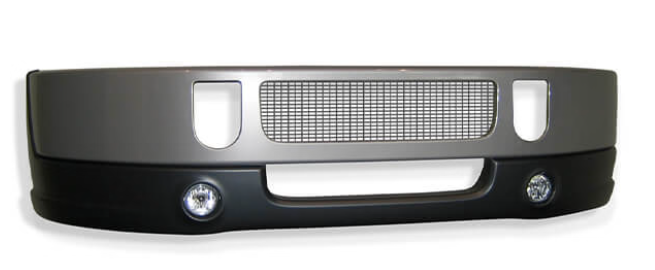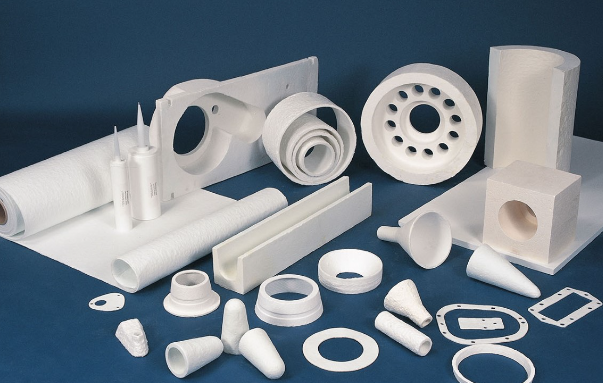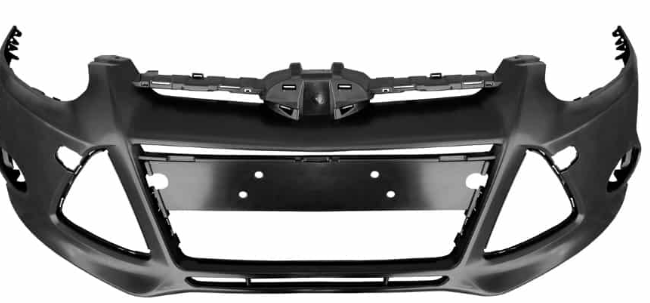Custom Packaging Solutions
Custom packaging solutions using vacuum forming offer a tailored approach to packaging design, often leading to enhanced product safety, branding opportunities, and cost-effective production. In this sector, vacuum forming plays a crucial role in creating packaging that is both functional and aesthetically appealing.
Designing for Vacuum Forming
- Utilize 3D Modeling: Implement 3D design software to create precise packaging molds. This aids in visualizing the final product and ensures accuracy in dimensions.
- Consider Mold Design: Opt for molds that facilitate easy release and maintain the integrity of the packaging shape. This involves considering factors like draft angles and undercuts.
- Incorporate Branding Elements: Design packages with spaces for branding, including logos and product information, which can be seamlessly integrated during the forming process.
Material Selection and Sustainability
- Choose the Right Plastic: Common materials include PVC, PET, and polystyrene. Each offers different properties such as clarity, strength, and flexibility. For example, PET is known for its clarity and recyclability, making it a popular choice for consumer goods packaging (PET).
- Focus on Sustainability:
- Use recycled materials where possible to reduce environmental impact.
- Consider the lifecycle of the material, from production to disposal, aiming for materials that can be easily recycled or are biodegradable.
- Balance Cost and Quality:
- Higher-quality materials may increase the cost but can offer better protection and a more premium look.
- Calculate the trade-off between durability and cost, ensuring the selected material aligns with the product’s needs and budget constraints.
Automotive Parts
Vacuum forming finds extensive application in the automotive industry for producing various components. This method offers cost-efficiency, design flexibility, and the ability to produce lightweight yet durable parts, crucial for automotive manufacturing.
Application in Vehicle Manufacturing
- Create Complex Shapes with Ease: Vacuum forming allows for the creation of complex shapes needed in automotive parts, such as dashboards, door panels, and air ducts.
- Speed Up Production Time: It significantly reduces the time taken to produce parts, aiding in faster assembly and production lines.
- Incorporate Integrated Features: Design parts with integrated clips, mounts, or fixtures, reducing the need for additional assembly and lowering labor costs.
Material Strength and Durability
- Select High-Performance Plastics: Use materials like ABS (ABS), polycarbonate, and high-impact polystyrene for their strength, durability, and heat resistance.
- Test for Impact Resistance: Ensure the materials can withstand impacts and vibrations common in automotive applications, maintaining structural integrity and safety standards.
- Balance Weight and Strength:
- Choose materials that offer the best combination of lightweight properties and strength, contributing to overall vehicle efficiency.
- Consider the longevity of the materials, aiming for those that can withstand the wear and tear of daily use without compromising on performance.
Materials Used in Vacuum Forming
Vacuum forming relies heavily on thermoplastics due to their ability to be heated and shaped under vacuum. The choice of material impacts the quality, durability, and functionality of the final product.
Thermoplastics: Types and Properties
- Acrylonitrile Butadiene Styrene (ABS): Known for its toughness and impact resistance. Ideal for automotive parts, consumer goods, and enclosures (ABS).
- Polystyrene (PS): Offers excellent clarity and stiffness. Commonly used for disposable packaging, CD cases, and lab ware.
- Polyethylene Terephthalate (PET): Renowned for its strength, thermo-stability, and recyclability. Common in food packaging and medical devices (PET).
- Polyvinyl Chloride (PVC): Versatile with good chemical resistance. Used in a wide range of products from medical devices to automotive parts (PVC).
- Polycarbonate (PC): Extremely durable, with high impact resistance and transparency. Suitable for protective gear, automotive components, and medical applications.
Considerations for Material Selection
- Application Specific Requirements: Determine if the material needs to be food-grade, UV resistant, flame retardant, or suitable for outdoor use.
- Mechanical Properties: Consider tensile strength, elongation, and flexural modulus, which dictate how the material behaves under stress.
- Aesthetic Considerations: Assess color, texture, and finishing options. Clear materials like PET and PC are preferable for transparent applications.
- Environmental Factors: Prioritize materials with lower environmental impacts, such as recyclable or biodegradable options.
- Cost-Effectiveness: Balance the cost of the material with its properties. High-performance materials like polycarbonate may be more expensive but provide superior qualities.
- Regulatory Compliance: Ensure the material complies with industry-specific regulations, such as food safety standards for packaging or flame resistance in automotive applications.
The Vacuum Forming Process
Vacuum forming is a versatile and efficient process for shaping plastic materials into a wide range of products. This process is popular due to its simplicity, cost-effectiveness, and the ability to produce large parts with relatively low tooling costs.
Step-by-Step Guide
- Design and Create a Mold: Start by designing a mold, usually made from wood, aluminum, or a composite. The mold should mirror the desired shape of the final product.
- Select and Prepare the Material: Choose a thermoplastic sheet suitable for the product, considering factors like thickness, size, and type. Common materials include ABS, PET, and PVC.
- Heat the Plastic Sheet: Place the plastic sheet in the vacuum forming machine and heat it until it becomes soft and pliable. The heating time varies based on the material thickness and type.
- Apply Vacuum: Once the plastic is heated, quickly move it over the mold and apply a vacuum. The vacuum removes air between the mold and the plastic, causing the plastic to conform to the mold’s shape.
- Cool and Release: Allow the formed plastic to cool and solidify. Cooling time depends on the material and thickness. Once cooled, release the vacuum and remove the formed part from the mold.
- Trim and Finish: Trim away excess material and perform any necessary finishing touches, like sanding or painting.
Troubleshooting Common Issues
- Webbing: Occurs when the plastic sags and creates webs. To avoid this, ensure even heating and consider pre-stretching the material.
- Poor Detail Transfer: If the mold details aren’t transferring well, check the temperature and make sure the plastic is sufficiently heated.
- Thinning: If the material thins too much in certain areas, it could be due to the mold design or the placement of the plastic sheet. Adjust the mold design or sheet orientation.
- Bubbles or Holes: This can happen if the plastic overheats. Monitor the heating process closely and adjust temperatures accordingly.
- Uneven Thickness: To prevent this, maintain consistent heating and ensure the plastic sheet is level in the machine.

Design Considerations for Vacuum Formed Products
Designing for vacuum forming involves balancing functionality and aesthetics while ensuring manufacturability. These considerations are crucial in creating products that not only look good but also perform well in their intended applications.
Designing for Functionality and Aesthetics
- Integrate Functional Features: Incorporate elements like hinges, clasps, or mounts directly into the design to enhance functionality.
- Consider Material Flexibility: Choose materials that offer the right balance of rigidity and flexibility for the product’s intended use. For instance, ABS is ideal for durable, yet slightly flexible parts.
- Aesthetic Appeal: Pay attention to the visual aspects, including color, texture, and finish. Use materials like high-gloss polystyrene for a shiny finish or textured ABS for a matte look.
- Ergonomics: Design with the end-user in mind, ensuring that the product is comfortable and user-friendly. This involves considering the shape, size, and how the product will be handled or used.
- Design for Assembly: Simplify assembly processes by designing parts that easily fit together or snap-fit, reducing labor costs and time.
Prototyping and Testing
- Rapid Prototyping: Utilize technologies like 3D printing to create quick prototypes for initial evaluations. This helps in visualizing the product and making necessary adjustments early in the design process.
- Material Testing: Test different materials to evaluate their performance under conditions like stress, heat, and UV exposure. This ensures the final product can withstand its intended environment.
- Functional Testing: Conduct tests to check the functionality of the product. For example, if designing a container, test its ability to hold weight, its seal quality, and ease of opening.
- User Feedback: Gather feedback from potential users on the prototype. This insight can be invaluable in refining the design for better usability and appeal.
- Iterate Design: Based on testing results and feedback, iterate the design to address any issues or improvements. This might involve adjusting dimensions, changing material types, or altering the design for better ergonomics.

Case Studies
Examining case studies in various industries provides insight into the innovative applications and challenges overcome using vacuum forming. These examples demonstrate the versatility and effectiveness of this manufacturing process.
Innovative Uses in Different Industries
- Medical Equipment Housing: In the medical industry, vacuum forming is used to create durable, lightweight housings for medical devices. For example, MRI machines and X-ray equipment housings are often produced using high-impact polystyrene due to its strength and radiation resistance.
- Automotive Component Manufacturing: The automotive sector utilizes vacuum forming for making interior parts like door panels and dashboards. Using materials like ABS ensures durability and a high-quality finish.
- Retail Product Packaging: Vacuum forming revolutionizes retail packaging by offering custom shapes and sizes, enhancing product appeal and protection. Clear PET is frequently used for its clarity and strength.
- Aerospace Applications: In aerospace, vacuum forming is instrumental in creating lightweight yet robust components, like interior cabin panels, using advanced materials like polycarbonate for its flame retardancy and strength.
Success Stories and Challenges Overcome
- Cost Reduction in Product Packaging: A company specializing in electronics shifted to vacuum-formed packaging, significantly reducing material costs and improving packaging efficiency. They used recycled PET, aligning with their sustainability goals.
- Customization in Automotive Interiors: An automotive manufacturer overcame the challenge of producing customized interiors for a luxury car model. They used vacuum forming to create intricate, high-quality ABS panels, offering both aesthetic appeal and durability.
- Meeting Medical Industry Standards: A medical device manufacturer faced the challenge of adhering to strict industry standards while producing lightweight and durable equipment housings. By choosing medical-grade PVC and rigorous testing, they met both safety and performance standards.
- Enhancing Aesthetics in Consumer Products: A consumer electronics company used vacuum forming to create sleek, modern housings for their products. By experimenting with different textures and finishes on ABS, they achieved a distinctive look that set their products apart in the market.



